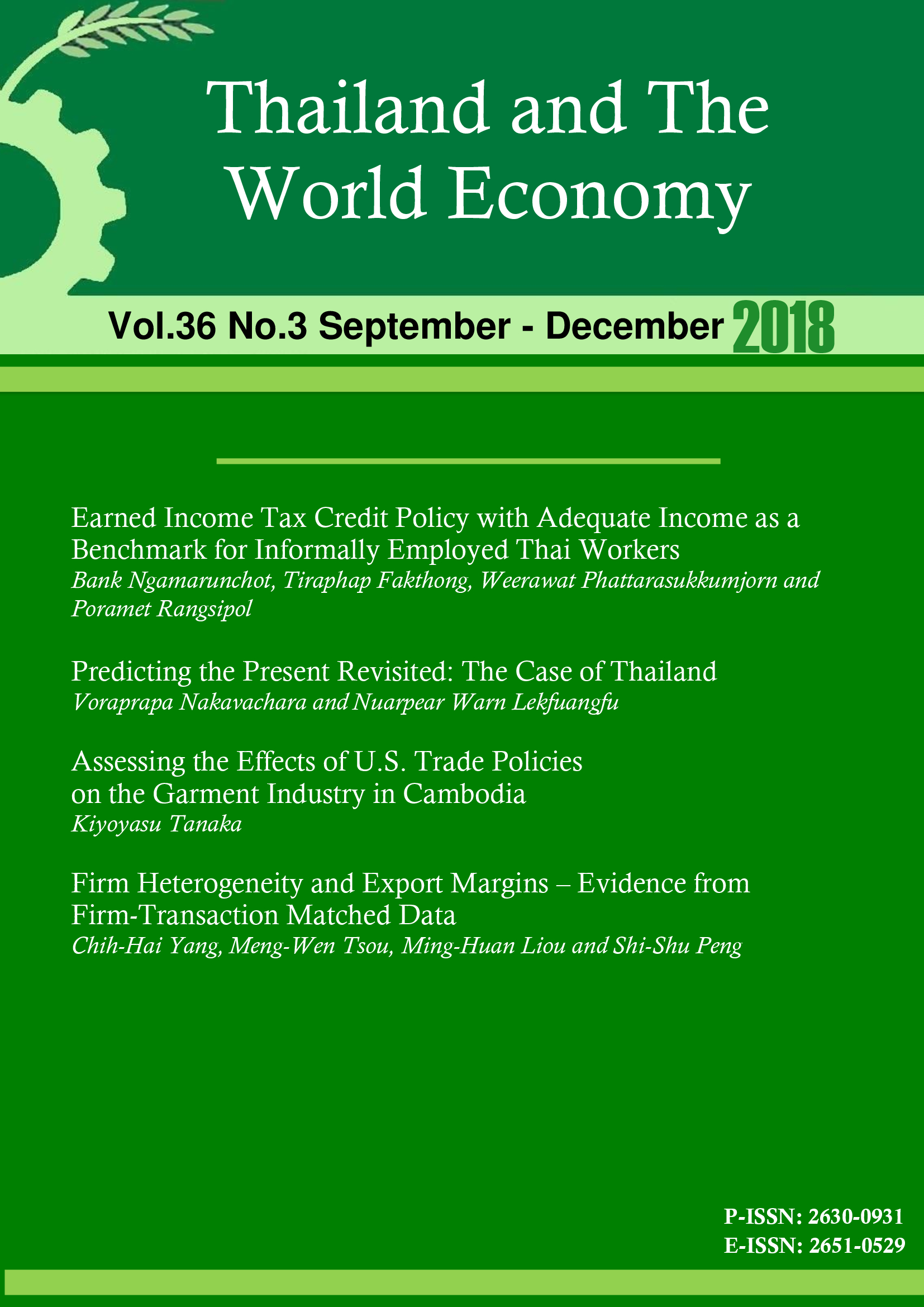Predicting the Present Revisited: The Case of Thailand
Keywords:
Nowcasting, Google TrendsAbstract
Google is currently the most widely used search engine in the world. There are approximately 3.5 billion searches conducted on Google each day. With real-time processing, Google Trends data can be used in a prediction technique called ‘nowcasting’ (or “predicting the present”) – using current period real-time information to estimate current period indicators of interest. In this paper, we show how Google Trends can be used for nowcasting various Thai economic indicators. The areas analyzed are (i) the labor market sector (unemployment registration and unemployment rate), (ii) the real sector (automobile sales), and (iii) the financial sector (the SET index). The results revealed that incorporating Google Trends data into prediction models improved both the Adjusted R-Squared and predication accuracies under various measures.
References
Askitas, N., & Zimmermann, K. F. (2009). Google econometrics and unemployment forecasting. Applied Economics Quarterly, 55(2), 107-120.
Berry, S., Levinsohn, J., & Pakes, A. (2004). Differentiated products demand systems from a combination of micro and macro data: The new car market. Journal of Political Economy, 112(1), 68-105.
Carrière‐Swallow, Y., & Labbé, F. (2013). Nowcasting with Google trends in an emerging market. Journal of Forecasting, 32(4), 289-298.
Chadwick, M. G. & Sengul, G. (2012). Nowcasting unemployment rate in Turkey: let’s ask Google. Working Paper No. 12/18, Central Bank of the Republic of Turkey.
Choi, H., & Varian, H. (2009a). Predicting the present with Google trends. Google Inc, 1-20.
Choi, H., & Varian, H. (2009b). Predicting initial claims for unemployment benefits. Google Inc, 1-5.
Choi, H., & Varian, H. (2012). Predicting the present with Google trends. Economic Record, 88(s1), 2-9.
Fama, E. F. (1981). Stock returns, real activity, inflation, and money. The American economic review, 71(4), 545-565.
Fonduer, Y., & Karame, F. (2013). Can Google data help predict French youth unemployment?. Economic Modelling, 30(1), 117-125.
Lekfuangfu, N.W., Nakavachara, V., & Sawaengsuksant, P. (2016). Labour market insights: the power of internet-based data. Conference Paper presented at the Bank of Thailand’s Symposium 2016.
Lekfuangfu, N.W., Nakavachara, V., & Sawaengsuksant, P. (2017). Glancing at labour market mismatch with user-generated internet data. PIER Discussion Paper No. 53, Puey Ungphakorn Institute for Economic Research.
McLaren, N. & Shanbhogue, R. (2011). Using internet search data as economic indicators. Bank of England Quarterly Bulletin, 2011Q2, 134-140, Bank of England.
Phillips, A. W. (1958). The relation between unemployment and the rate of change of money wage rates in the United Kingdom, 1861–1957. Economica, 25(100), 283-299.
Seabold, S., & Coppola, A. (2015). Nowcasting prices using Google trends: an application to Central America. World Bank Group Policy Research Working Paper No.7398, World Bank.
Suhoy, T. (2009). Query indices and a 2008 downturn: Israeli data. Bank of Israel Discussion Paper No. 2009.06, Bank of Israel.
Vincente, M. R., Lopez-Menendez, A. J., & Perez, R. (2015). Forecasting unemployment with internet search data: does it help to improve predictions when job destruction is skyrocketing?. Technological Forecasting & Social Change, 92(1), 132-139.
Zeybek, O. & Ugurlu, E. (2015). Nowcasting credit demand in turkey with Google trends data. Journal of Applied Economic Science, 10(2), 293-300.










